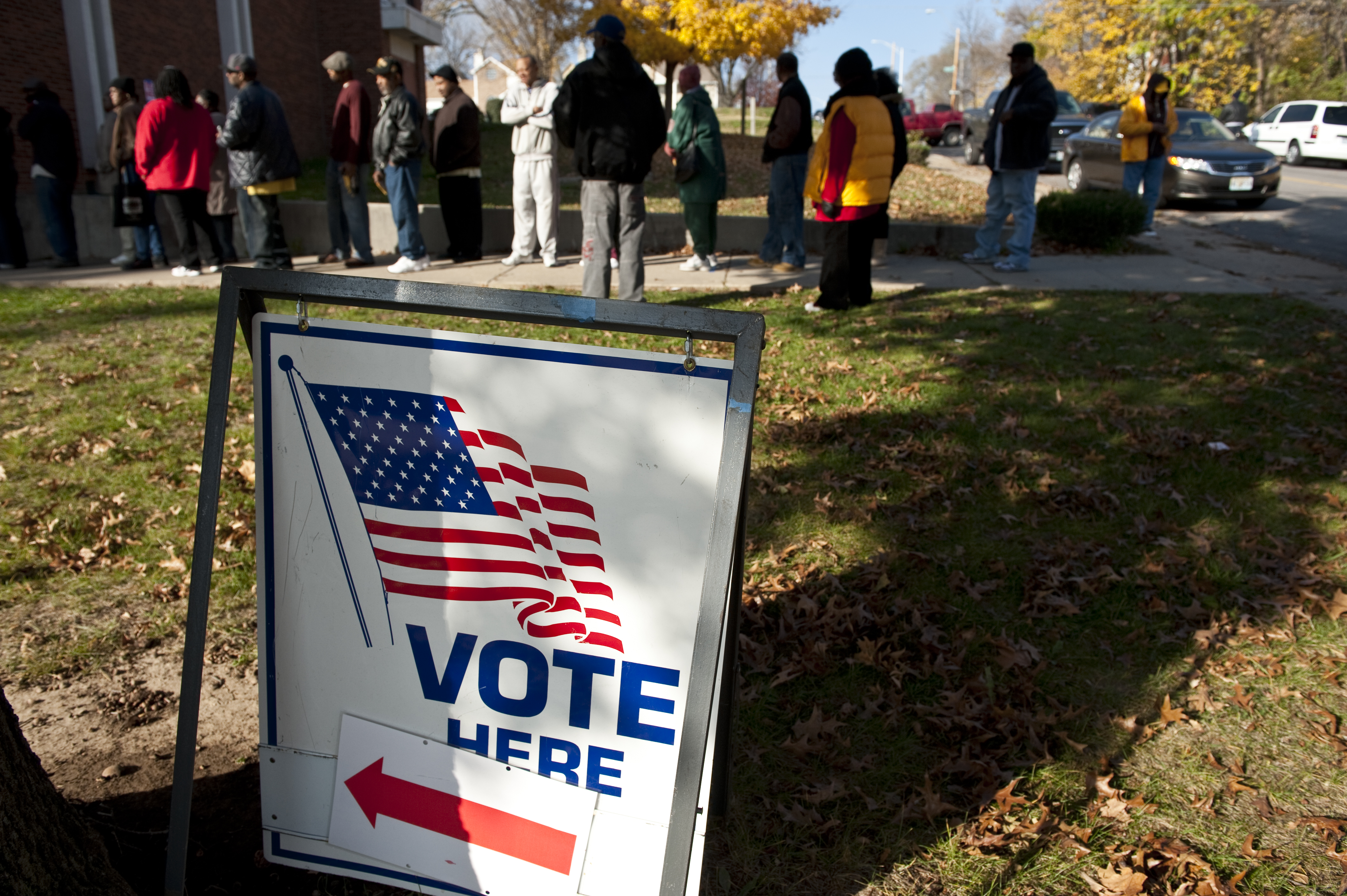How to Vote in Kansas’ 2024 Elections
Important dates and election information
Key dates
- Presidential primary: Tuesday, March 19
- State primary: Tuesday, Aug. 6
- General election: Tuesday, Nov. 5
Voting at a glance
- Advance voting: All registered voters can request a no-excuse advance ballot by mail.
- Early voting: Kansas allows in-person early voting at county election offices or satellite voting locations up to 20 days before an election. This starts on Wednesday, July 17, for the state primary.
- Voting at the polls: Polls are open from at least 7 a.m. to 7 p.m. Exact hours may vary by county. Be sure to bring an approved photo ID.

What to know about recent changes
The state-run presidential preference primary, held this year on Tuesday, March 19, was previously held only in 1980 and 1992. The legislature will decide at a later time whether to have one in 2028.
Also, in 2023 lawmakers adopted additional changes recommended by the secretary of state’s office regarding political parties and candidates. The secretary of state’s website outlines details.
Voter registration
Voter registration closes 21 days before an election, and an application must be postmarked on or before the deadline. The deadline to register to vote or update voter registration information for the state primary is Tuesday, July 16. Register:
- By mail: Print and complete an application form, or contact your county elections office and ask to receive an application by mail. Include your driver’s license number or state ID number, or the last four digits of your Social Security number. Mail completed forms to your county elections office listed at the bottom of the form.
- In person: Register to vote or drop off an application at your local election office.
- Online: Visit the state’s elections website and fill out the online voter registration application. You'll need a valid Kansas driver’s license or state ID card. Fill out the form online, print it out and submit as instructed.
Check your registration status through the state’s voter information portal.
Registering to vote on Election Day
Kansas law does not permit voter registration on Election Day.
Primary voting and party affiliation
You can only vote in the primary for the party with which you’re affiliated. The deadline to change your party affiliation for the state primary is Monday, June 3 at noon. You must re-register anytime you change your party affiliation.
Ways to vote
Requesting an advance ballot
Any registered voter can request an advance ballot. The secretary of state’s website has advance voting instructions online.
- By mail: Print an advance ballot application and mail your completed application to the secretary of state’s office, along with your driver's license number or ID card number, or a copy of your photo ID.
- In person: Visit your local elections office to request an advance ballot.
- Online: Complete an application for an advance ballot by mail on the secretary of state’s website.
Voters may call their local election office or go online to myvoteinfo.voteks.org to check the status of their advance by mail ballot application.
Returning your advance ballot
Voters can return advance ballots:
- By mail: Completed ballots may be returned by mail, including by the U.S. postal service, FedEx, UPS or other mail carrier. Ballots must be postmarked on or before Election Day.
- In person: Take your completed ballot to your local elections office. Mail ballots can be returned to any advance in-person voting location during voting hours.
- Drop box: Some jurisdictions also offer secure ballot drop boxes. Visit your county election office for details.
Ballots must be delivered or postmarked by 7 p.m. on Election Day. Voters can track the status of their mail-in ballots online at myvoteinfo.voteks.org.
Voting in person before Election Day
Voters may vote in advance in person at county election offices or satellite voting locations up to 20 days before an election. For the general state primary, advance in-person voting runs from Wednesday, July 17, to Monday, Aug. 5.
Contact your local elections office to confirm advance-voting dates, hours and locations for your county.
The secretary of state’s office will also provide this information prior to each election.
Voting at the polls on Election Day
Polling places must be open by 7 a.m. and remain open until at least 7 p.m. on Election Day. However, counties may open polling locations as early as 6 a.m. and close as late as 8 p.m. Check your county election office for details. All voters who are in line when polls close will be permitted to vote.
Find your polling place and view sample ballots through the state’s Voter View site.
Voter ID requirements on Election Day
Bring an approved photo ID when casting a ballot in person. Acceptable forms of ID include a driver’s license or state ID card, U.S. passport, tribal ID or concealed carry license. A complete list of acceptable IDs can be found on the state elections website. Voters age 65 or older may use an expired photo ID.
If you don’t have a valid ID, you’ll receive a provisional ballot, which will be set aside and counted once you submit photographic identification to your county.
Voting with a disability
Each polling place will have at least one voting machine with features to help voters with disabilities vote independently. Voters with disabilities may also request assistance from a friend, family member or companion, or seek assistance from a worker at a polling location.
Permanent advance-voting applications are available for people who have trouble voting in person due to permanent illness or disability. These voters can receive advance ballots by mail for all future elections. All polling places accommodate curbside voting. You may send someone to alert poll workers or follow curbside voting instructions displayed in the parking area to participate.
More information about candidates
Key races:
- U.S. President
- U.S. House: four seats
- State Senate: 40 seats
- State House: 125 seats
Check the secretary of state’s website to view candidates in the primary or general election for national and state offices. Check your county election sites for sample ballots, which will also be posted online at myvoteinfo.voteks.org.
Editor’s note: This guide was first published on Jan. 31, 2024. It has been updated with new information about upcoming 2024 elections.
Michelle Tuccitto Sullo is a contributing writer covering state and federal policy. She previously served as managing editor of the Hartford Business Journal in Connecticut and has also worked for the New Haven Register, Connecticut Law Tribune and New Haven Biz.
Also of Interest:
- Follow AARP's political coverage
- Keep up with local events and AARP advocacy efforts
- Find voter guides for all 50 states
- Learn more about AARP’s caregiving advocacy work


